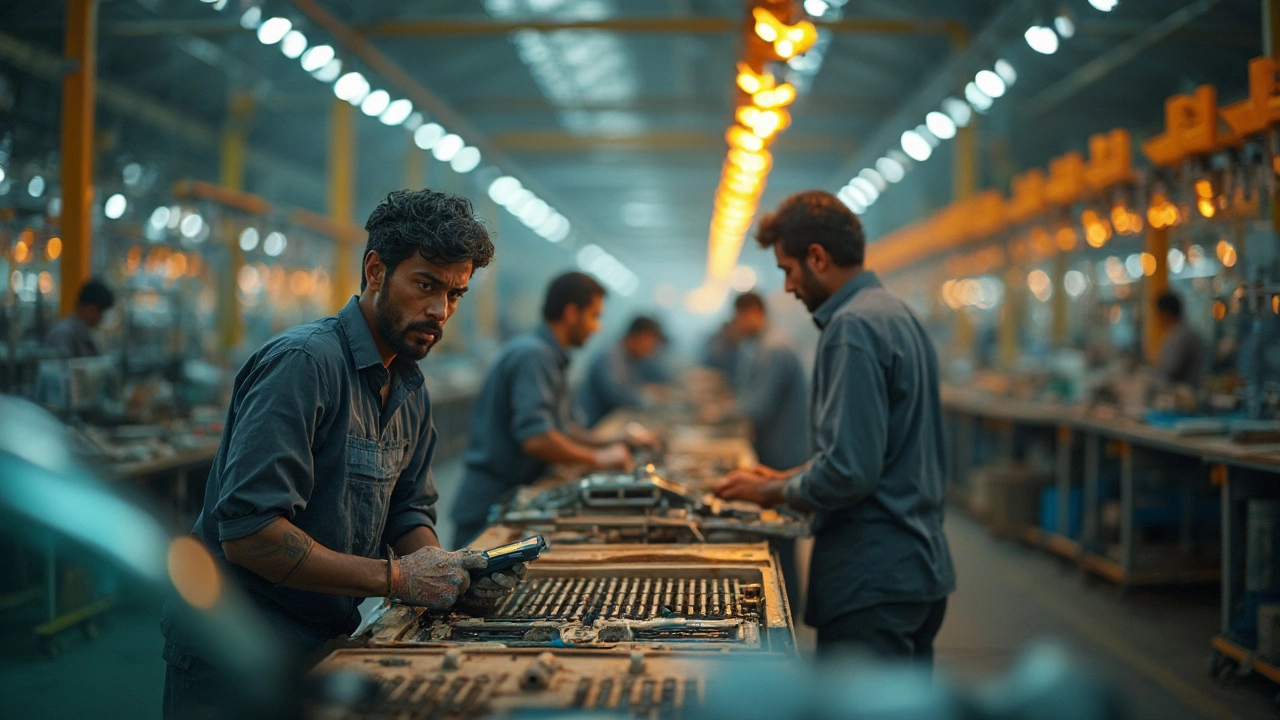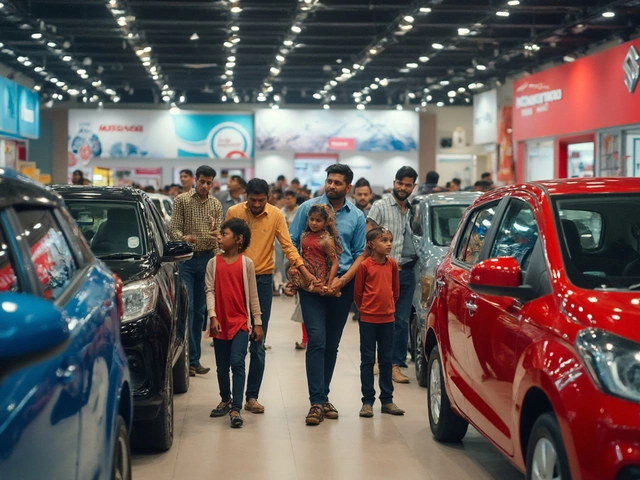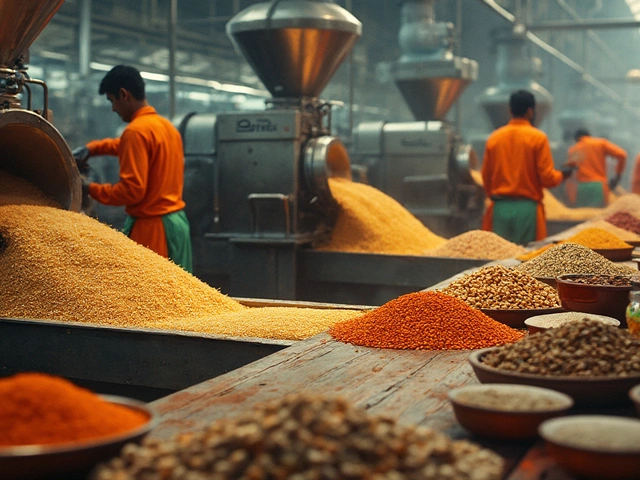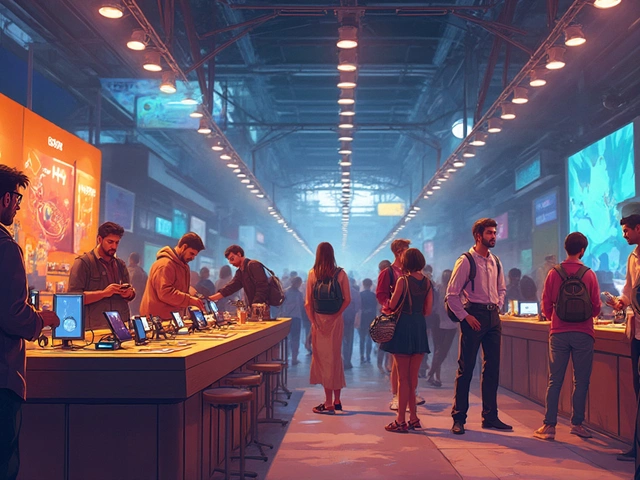Manufacturing isn't just about building things; it's a powerhouse for job creation. You might be surprised to know that in many countries, one in every ten jobs is directly linked to manufacturing. And because it often pays above-average wages, it uplifts entire communities.
But jobs are just one part of the picture. Manufacturing is like a magnet for innovation. Think about it: many tech advances started on the factory floor, from robots assembling cars to 3D printers making prototypes in minutes.
So, what role do governments play here? They can either fuel or stall this engine with their policies. For instance, tax incentives and grants are popular ways to encourage growth, but regulations can sometimes throw a wrench in the works.
- The Backbone of Jobs
- Innovation and Advancements
- Government Schemes in Action
- Challenges Faced by Manufacturing
- The Global Competitive Edge
- Future Trends to Watch
The Backbone of Jobs
It's no secret: manufacturing is a huge player in the job market. Let's break it down. In the U.S., around 12 million people are employed in manufacturing jobs. That's about 8-9% of the total workforce. And it's not just about the numbers. These jobs tend to pay pretty well compared to other sectors, offering a comfortable living to many families.
Why do these jobs matter so much? Besides the obvious fact that everyone needs a paycheck, manufacturing gigs are usually stable, providing long-term career paths rather than just temporary stops.
Job Multiplier Effect
Here's a cool fact: for every job in manufacturing, there's a multiplier effect. This means that each manufacturing job supports multiple other positions, from supply chain roles to sales and beyond. According to research, the multiplier can be between 1.4 to 2.5 in developed countries.
Skilled Workforce Demand
As technology advances, the demand for skilled workers increases. Gone are the days when factory jobs were mainly about manual labor. Now, there's a need for precision operators and tech-savvy individuals who can work with complex machines and software.
Here's a short list of some in-demand manufacturing jobs:
- R&D Technicians
- Automation Engineers
- Quality Control Analysts
- Logistics Managers
Thanks to government schemes and initiatives, like training programs and tax credits, more people are getting the education needed to fill these roles, giving a boost to the economy.
Importance in Local Economies
In smaller towns and rural areas, factories can be the heartbeat of the local economy. They create a supportive ecosystem of businesses—think local diners, services, and retail stores—that thrive on the spending of factory workers.
Simply put, manufacturing jobs aren't going away anytime soon. They continue to be a critical part of the economic landscape, keeping communities flourishing and innovation constant. It's safe to say, without manufacturing, the economic engine would slow down significantly.
Innovation and Advancements
When it comes to driving progress, manufacturing is often at the forefront. This sector isn't just a powerhouse on its own; it's also a breeding ground for new and exciting technologies. Ever heard about the Internet of Things? It's hugely transforming the way manufacturing operates, leading to smarter, more connected factories.
Revolutionizing Production with AI and Robotics
Artificial intelligence and robotics are reshaping manufacturing. AI algorithms anticipate maintenance needs before a machine even starts to falter, minimizing downtimes and saving costs. Meanwhile, robots take over repetitive tasks, letting human workers focus on more creative and complex challenges.
3D Printing: From Prototypes to Production
3D printing, once a novel concept, is now an integral part of manufacturing. This tech allows companies to rapidly prototype, and it’s even moving into full-scale production. From aviation to healthcare, industries are using 3D printing to create lighter, more efficient parts.
Eco-friendly Manufacturing
Sustainable practices are becoming a priority. Companies are investing in greener processes and materials, with some even turning factory waste into new forms of energy. It's not just good for the planet; it can also save money.
Innovation doesn’t stop there. Big data analysis helps improve efficiency and product quality by providing deep insights into every part of the production process. And as more investment flows into automation and smart technologies, the future of manufacturing is sure to keep pushing boundaries.
| Advancement | Impact |
|---|---|
| AI & Robotics | Increased efficiency, reduced downtime |
| 3D Printing | Faster prototyping, customized products |
| Eco-friendly Processes | Reduced carbon footprint, cost savings |
Government Schemes in Action
When it comes to boosting the manufacturing sector, government schemes play a huge role. These initiatives can open doors, providing the resources and support businesses desperately need.
Tax Breaks and Incentives
One of the simplest yet effective tools is tax breaks. Governments often give manufacturers tax benefits to help reduce costs and encourage expansion. Take the R&D tax credit in the US, for instance. It offers companies a chance to claim money back on investments in new technologies.
Grants and Funding Opportunities
Beyond tax cuts, there are direct government schemes that provide funding. In the UK, the Manufacturing Growth Programme helps small businesses with grants for growth and innovation projects. The goal? To give smaller companies the muscle to compete with major players.
Infrastructure and Training Programs
Many governments focus on infrastructure and training to support the economy. By investing in transport and communication networks, they make it easier for manufacturers to reach markets. Also, through education and training schemes, like Germany's dual-study system, workers gain the skills companies need.
Turning Challenges into Opportunities
Let's look at India, where the "Make in India" initiative aims to transform the country into a global manufacturing hub. This involves improving infrastructure, easing business regulations, and creating a skilled workforce. Such comprehensive approaches showcase how thoughtful policies can make all the difference.
Overall, these government schemes aren't just red tape or bureaucracy. They're essential tools that can revitalize manufacturing and, in turn, drive economic growth.

Challenges Faced by Manufacturing
Every industry faces hurdles, and manufacturing is no exception. There's a lot that can go sideways, from supply chain snafus to labor shortages.
Supply Chain Struggles
Ever wondered how a little part not being shipped on time can halt a production line? The supply chain is like a well-oiled machine; if one cog fails, the whole thing can come to a grinding halt. Recent events like pandemics and geopolitical tensions have made this even more glaringly obvious.
Labor Shortages and Skill Gaps
Finding skilled workers is a perennial problem. As manufacturing becomes more tech-heavy, the demand for workers who can operate advanced machinery grows. However, there's a gap because not enough people are trained for these roles. It’s a classic demand-supply clash.
Regulatory Hurdles
Let's talk about the red tape. Governments put rules in place to ensure safety, but sometimes these regulations can be a bit much. Compliance can be costly and time-consuming, sometimes stifacing innovation and slowing down manufacturing processes.
Sustainability and Environmental Concerns
There's also the ever-increasing scrutiny on the environmental impact of manufacturing. Companies are under pressure to reduce their carbon footprint, which requires investment in cleaner technologies—a challenge but also an opportunity for those who can adapt.
Technological Challenges
While tech is supposed to make things easier, it isn't always smooth sailing. Between integrating new systems and facing cybersecurity threats, manufacturers have their hands full. Plus, keeping up with rapid advancements requires constant updating and learning.
In conclusion, while the sector faces several challenges, addressing them is key to sustaining this vital part of the economy. Adaptation and innovation are the names of the game here!
The Global Competitive Edge
In the wild world of manufacturing, staying competitive is a never-ending race. Countries are constantly vying for the top spot by adopting new technologies, improving productivity, and lowering costs. Let's dive into what makes a nation a manufacturing powerhouse.
Technology as a Catalyst
Technology plays a pivotal role in giving a country its edge. With Industry 4.0 on the rise, manufacturers integrate IoT, AI, and automation to streamline processes. This means smarter factories, efficient resource use, and lower production costs. For example, Germany's commitment to automation has made it a leader in high-quality manufacturing.
Cost Efficiency Strategies
Then there's the cost factor. Countries with lower labor costs often attract big-name brands looking for cheap production. But it's not all about cheap labor. Efficient supply chains and reduced energy costs can make a huge difference. China, for instance, excels not just because of labor but also due to its logistical might.
Trade Policies and Tariffs
Trade policies are another game-changer. Nations that strike favorable trade deals can boost exports significantly. The US-Mexico-Canada Agreement, for example, helps remove barriers, allowing smoother trade among these regions.
Global Trade Data
| Country | Manufacturing Output ($ Billion) | Year |
|---|---|---|
| China | 3,823 | 2023 |
| USA | 2,283 | 2023 |
| Germany | 720 | 2023 |
Looking at the numbers, China, the USA, and Germany lead in manufacturing output, highlighting their focus on key areas like technology, cost, and trade policies.
So, in this cut-throat arena, being ahead means embracing technology, managing costs smartly, and having shrewd international trade strategies. Manufacturers that can juggle these factors find themselves at the forefront of the global stage.
Future Trends to Watch
As we look ahead, the manufacturing landscape is set for some exciting shifts. One trend that's hard to ignore is the increasing role of automation. With smart robotics and AI, factories are becoming more efficient, albeit with fewer human hands involved. This isn't just about saving costs; it's about boosting productivity to levels we've never seen before.
Green Manufacturing
Sustainability is hitting center stage. Companies are getting serious about reducing their environmental impact, not just because it’s good for the planet, but because consumers care. Expect to see more green factories with zero waste policies and the use of renewable energy sources becoming standard practice.
Personalized Production
Gone are the days when one size fits all. The demand for customized goods is on the rise. Thanks to advanced manufacturing techniques like 3D printing, companies can now create tailored products without breaking the bank. This shift is making manufacturing more adaptable and responsive to individual needs.
Reshoring and Local Production
Remember when offshoring was all the rage? Well, the tide is turning. Due to supply chain headaches and the desire for quicker turnarounds, many countries are bringing manufacturing back home, known as reshoring. This change could usher in a new era of local job growth and economic stability.
Data-Driven Decisions
Data is king, and that’s no different in manufacturing. With sensors and IoT devices streaming data from production lines, businesses can spot issues before they become problems. Expect more analytics-driven approaches, translating to smarter, real-time decisions.
| Trend | Impact |
|---|---|
| Automation | Increased productivity |
| Green Manufacturing | Better environmental impact |
| Personalized Production | Customer satisfaction |
| Reshoring | Local job growth |
| Data Usage | Efficient operations |
These trends are reshaping the manufacturing landscape, and it's vital for businesses and policymakers to keep up with these changes. The shifts aren't just buzzwords—they're dictating the future of the economy.






